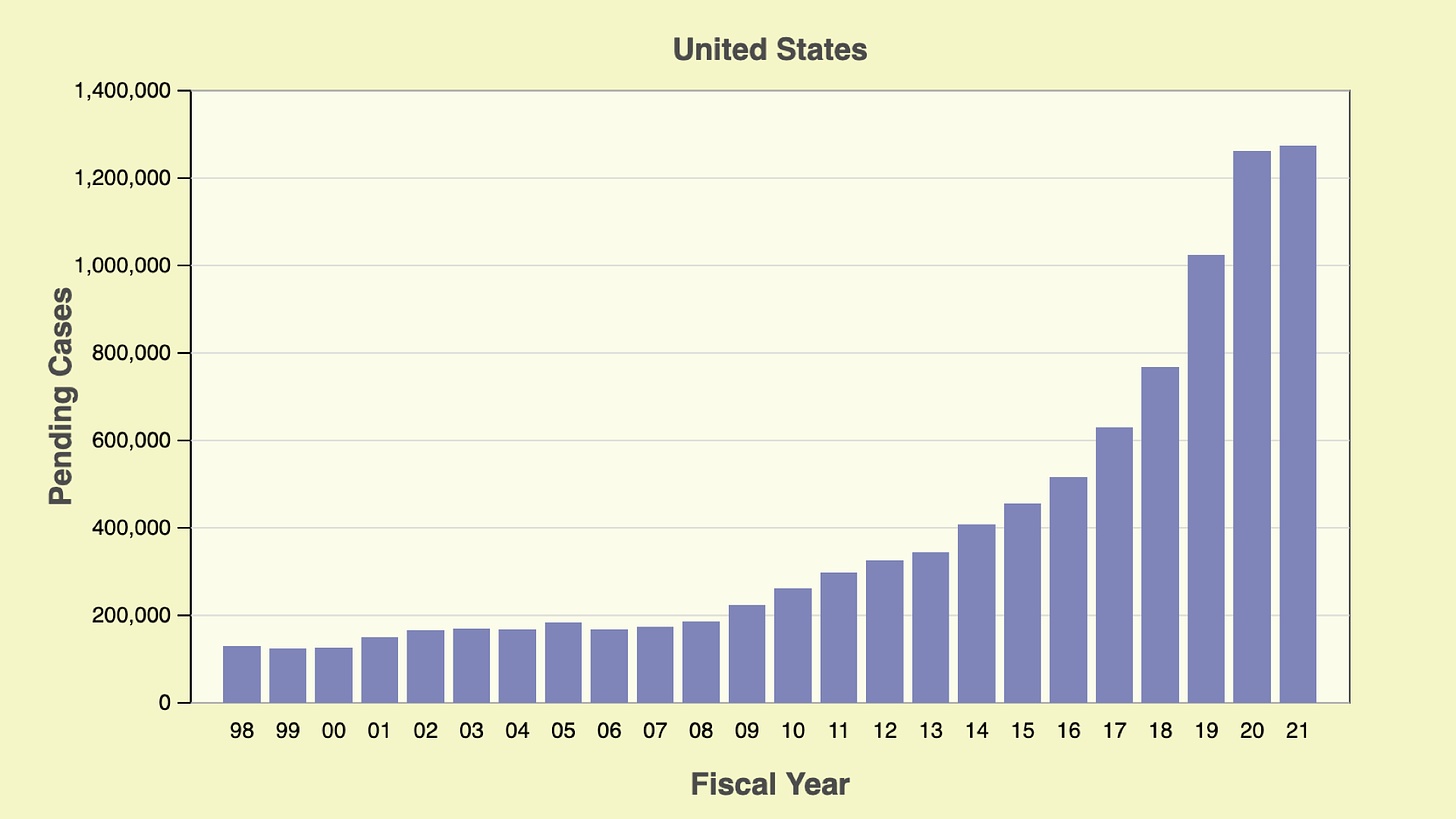Hurry Up and Wait to Go to Court
Biden will inherit the most backlogged Immigration Court system in history.
You may already know this, but I work at TRAC. TRAC is a research institute at Syracuse University that studies the federal government. Our biggest research area is immigration—which is good, because immigration research is my bag, baby.
Today we are releasing our latest data on the Immigration Courts. We do this every month, and it’s always an exciting day for me because we get to share the new trends we find. Plus we publish this data through a bunch of interactive data tools (available here) which let the rest of the public explore the data themselves, too. It’s like Geek Christmas (or Geek Diwali or your holiday of choice) twelve times a year.
The Immigration Courts are in the Department of Justice, and Immigration Judges are responsible for deciding whether people who are at risk of deportation should be allowed to stay in the United States or not.
In any case, here’s the point: there’s a huge (and growing) backlog in the courts. Because the Department of Homeland Security (a totally other agency) tries to deport anyone and everyone, they have been sending far more cases to the courts than the judges can complete. This has been happening for years. And the result is that the backlog is the biggest in history.
Why does this matter? It matters because when Joe Biden enters the White House on January 20, 2021, there will be 1,273,885 immigration cases just waiting to be decided by a judge. That’s right: nearly 1.3 million—MILLION—cases.
How many people is that? Think about it this way. There are more people in the Immigration Court backlog right now than each of eight US states and Washington, D.C. San Jose—the 10th largest city in the United States—has just over a million people. Just imagine trying to talk to every single individual person in a city the size of San Jose to determine whether they should be deported, possibly back to their death. That’s a very serious business for a lot of people.
Here’s what the backlog looks like over time. If you want to see this data for yourself, check out our immigration backlog tool here.
Will the backlog continue to grow? What can the Biden Administration do to address this? Is the backlog always a bad thing or can it sometimes be a good thing? (Spoiler alert: yes, sometimes it’s a good thing.) In future posts, I’ll come back to talking about what this backlog means in the real world because it’s such a common theme of reporting on the Immigration Courts.
But one thing at a time.
If you like getting short updates about immigration, subscribe to this newsletter and share it with friends and on social media. Or if you don’t have friends, introduce yourself below and then we’ll each have a new friend.





